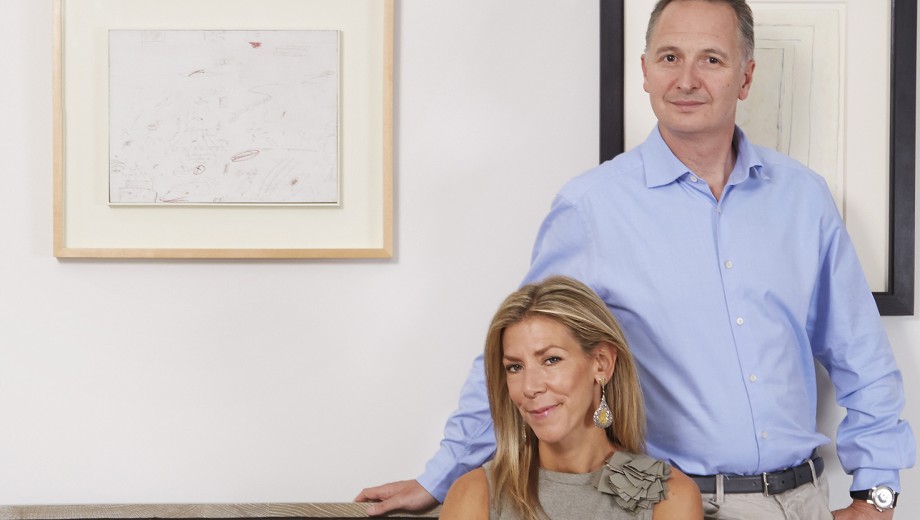When Amy Gold, AM’90, was doing her graduate work in Art History, she had a part-time job as a student docent at the Smart Museum of Art. “It was a really enlightening experience,” she says. “I had to not only use my knowledge of art history but also learn how to articulate that to a group of peers, or younger students, or older visitors.”
Gold, now an independent art dealer, wanted future UChicago students to have similar opportunities. She is a member of the Smart’s board and the visiting committee for the Division of the Humanities. Last year she and her husband, Brett Gorvy, chairman and international head of postwar and contemporary art at Christie’s, established the Amy Gold and Brett Gorvy Student Work Fund, supporting student staff at the Smart in perpetuity. The couple will also help to fund the Smart’s K–12 education offerings over the next five years with an additional gift.
Gold and Gorvy’s generosity extends to the Art History department, where their support will underwrite traveling seminars over the next few years. The faculty-led seminars give graduate and undergraduate students direct access to the artworks, cultural objects, monuments, or buildings they are studying. “Traveling seminars have figured at the top of our wish list for several years,” says Professor Christine Mehring, who chairs the department. “They are a critical complement to study in the classroom.”
In the past, traveling seminars were few and far between. In 2011 Professor Rebecca Zorach took a group to Paris for the seminar What Is an Archive? History, Theory, Practice. Besides visiting libraries, archives, and museums as a group, each student pursued an individual archival research project. This spring Associate Professor Aden Kumler, AB’96, is taking a group to London, Cambridge, and Oxford for The Art of the Parish in Medieval England. Students will also visit Canterbury Cathedral and get a once-in-a-lifetime chance to observe major renovations.
It’s the kind of experience that Gold, who wrote her master’s thesis on twelfth-century church space, would have savored. As a student she did engage directly with the art world: she held an internship at the Art Institute of Chicago. After graduation, the museum hired her as a curatorial assistant and she learned fundraising skills that would serve her well later in her career. In 2000 Gold was recruited to become the head of the Midwest region for Christie’s, where she met Gorvy.
Fundraising and working in the commercial art world both require people to “believe in your product,” says Gold. “I wouldn’t ask somebody to give money for something unless I would do so myself. I’m unable to sell work unless I feel passionate about it.”
After ten years at Christie’s, Gold became a senior director at the New York gallery L&M Arts. Since 2011 she has been an independent art dealer, focusing mainly on twentieth-century masters. “The commercial art world has really changed,” she says. “Art is thought of these days as an asset class, which 20 years ago, even ten years ago, I don’t think it was so much. Values of art have become so substantial that you can’t help but think about it that way.”
In their personal collection, Gold and Gorvy focus on works on paper, beginning in the 1930s. “Other than maybe two works in our collection, we agree on everything,” she says. Even when they flip through a stack of auction catalogs or walk through an art fair separately, “we’ll both come to the same piece.” But a downside of being such passionate collectors is that they have almost no wall space left in their Upper West Side apartment.
Gold has offered to facilitate access to private collections of contemporary art for Art History faculty and students on traveling seminars, in addition to providing financial support. Seeing such art only in a museum setting can be a limiting experience, says Mehring: “Collectors, like artists, often have a very idiosyncratic way of looking at art that art historians might never think of. I would love for our students to see that.”
PHOTOGRAPHY BY THOMAS LOOF/COURTESY ARCHITECTURAL DIGEST


Add new comment